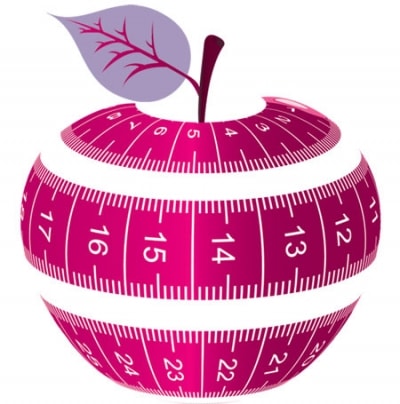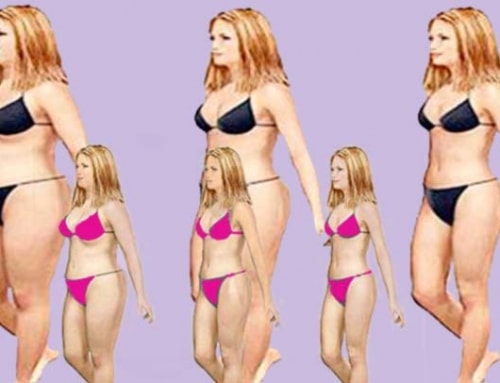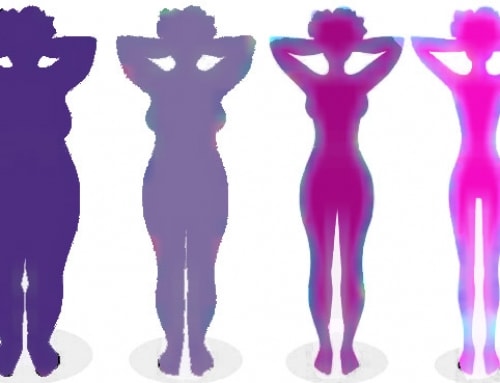If you’re like I was before I lost weight, you dream of having a flat belly and hate that you can grab your belly fat like it’s a football! Or worse still, it looks like you’re pregnant!
So, why do we carry our fat around our belly? My mother used to say it was feminine – and to an extent, she was spot on. In history, beauty was portrayed as rounded and plump. And literary descriptions were complimentary about what we would now call belly fat. Maybe it is our hormones. Those pesky hormones have a lot to answer for when it comes to weight loss. But I digress, the real question is how to lose belly fat.
What type of Belly Fat do you have?
“Subcutaneous fat” is fat you can pinch, it’s soft and sits between your skin and muscle. Whilst “visceral fat” is located in and around your organs. It’s hidden deep within the belly region, which is what makes it firm and pressable rather than pinchable. Visceral fat carries health risks far higher than those associated with subcutaneous belly fat. Before you can find out how to lose belly fat, it pays to know which type of belly fat you have.
Here are a few ways to tell which type of belly fat you have:
The Pinch test
If your belly fat is squidgy, it’s more likely to be subcutaneous fat than visceral fat. Whereas if it is firm then it could be visceral fat.
Body Type
Find out your body type here. If you are an O shape, you’re more likel to have visceral fat than if you’re an A shape.
Waist to Hip Ratio
Men should have a WHR of less than 1 while women should have a WHR of less than 0.8. Check your waist to hip ratio here.
Fat around your abdomen is often made up of visceral adipose tissue (VAT). If you think your belly fat is visceral, there’s some really good news!
Because of its proximity to the liver, visceral fat is usually the easier fat to burn.
Though you can’t completely spot reduce fat around your belly no matter how many crunches you do. There is some scientific evidence that the following techniques will reduce visceral fat.
How to lose belly fat – the visceral kind
 Soluble Fiber
Soluble Fiber
Soluble fiber may help fight belly fat. An observational study of over 1100 adults found that for every 10-gram increase in soluble fiber intake, belly fat gain decreased by 3.7% over a 5-year period.
Make an effort to consume high-fiber foods every day. Excellent sources of soluble fiber include flaxseeds, shirataki noodles, Brussels sprouts, avocados, legumes and blackberries.
Trans Fats
Avoid trans fats. They’re found in some margarines and spreads, and they’re also added to some packaged foods.
A 6-year study found that monkeys who ate a high-trans-fat diet gained 33% more abdominal fat. So, to help reduce belly fat and protect your health, stay away from products that contain trans fats. These are often listed as “partially hydrogenated” fats.
Alcohol
Alcohol can have health benefits in small amounts, but we all know it’s harmful if you drink too much. In addition, research suggests too much alcohol can also make you gain belly fat. Observational studies link heavy alcohol consumption with significantly increased risk of excess fat storage around the waist.
In a study of more than 2000 people, those who drank alcohol daily but averaged less than one drink per day had less belly fat than those who drank less frequently but consumed more alcohol on the days they did drink. So, it makes even more sense to limit the amount you drink.
Vigorous activity
Sweat for 30-60 minutes each day. Visceral fat responds well to regular endurance exercises, such as running, biking, rowing, swimming, that elevate your heart rate. As your body uses fat to fuel exercise, it’ll start using up your visceral stores.
The type of exercise you choose is less important than the intensity at which you perform it. While any activity is positive when it comes to losing belly fat, moving at a high intensity or performing high-intensity intervals is most effective.
A study in 2009 showed that older individuals who raised their heart rate to 75 percent or more of their maximum heart rate and burned 1,000 calories a week for 12 weeks lost notable amounts of visceral fat. In comparison, those who burned the same number of calories with low or moderate-intensity didn’t experience the same reduction in belly fat.
High-intensity interval training (HIIT) turns on fat-burning mechanisms in the body.
An analysis published in the Journal of Obesity in 2011 it to be more effective when it comes to burning fat, including subcutaneous and visceral fat.
Sugar
Cut way back on added sugars since it is more likely to end up as visceral fat.







Valuable content! Love it! But do we have to concentrate only on eating soluble fiber? Or is it fine to eat other foods rich in fiber? You answer will be much appreciated!
Anyway, I found this article to be motivational to drive me further into my weight loss journey.
Hi Carlo, Thanks for your comment. Soluble fibre was the type covered in the observational study which found a benefit in the reduction of visceral fat. Soluble fiber is “soluble” in water. When mixed with water it forms a gel-like substance and swells. Soluble fiber has many benefits, including moderating blood glucose levels and lowering cholesterol. Whereas insoluble fiber does not absorb or dissolve in water. It passes through our digestive system in close to its original form. Insoluble fiber offers many benefits to intestinal health, including a reduction in the risk and occurrence of hemorrhoids and constipation. But has not been shown to have a particular benefit when it comes to reducing belly fat.